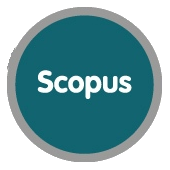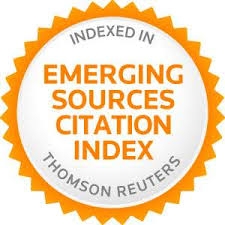Evaluación de la escritura académica: construcción y validación de un instrumento integrado basado en tareas para evaluar habilidades específicas de escritura
Resumen
Evaluar las habilidades de escritura es clave para el desarrollo de métodos de instrucción que ayuden a los nuevos estudiantes con la escritura académica universitaria. Este artículo presenta el proceso de construcción y validación de un instrumento desarrollado para ese propósito. Al hacerlo, primero discutimos la construcción teórica de la prueba evaluativa, luego describimos el proceso a través del cual el instrumento fue desarrollado y validado, y, por último, presentamos los resultados obtenidos y discutimos algunas de sus diversas implicaciones para la instrucción
Palabras clave
Referencias
Andueza, A. (2016). La escritura como herramienta de aprendizaje significativo: un cuasiexperimento en la clase de ciencias. Revista Complutense de Educación, 27(2), 653-668. doi: https://doi.org/10.5209/rev_RCED.2016.v27.n2.46918
Aull, L. & Lancaster, Z. (2014). Linguistic markers of stance in early and advanced academic writing: A corpus-based comparison. Written Communication 2014, 31(2), 151–183. doi: https://doi.org/10.1177/0741088314527055
Bazerman, C. (2012a). Genre as social action. In J.P. Gee & M. Handford (Eds.), The Routledge handbook of discourse analysis (pp. 226-238). New York, U.S.A: Routledge.
Bazerman, C. (2012b). Writing, cognition and affect from the perspectives of sociocultural and historical studies of writing. In V. Wise (Ed.), Past, present and future contributions of cognitive writing research to cognitive psychology (pp.89-104). New York, U.S.A: Psychology Press.
Bitran, M., Zúñiga, D., Paulina, F., Padilla, O. y Moreno, R. (2009). Mejoría en las habilidades de comunicación escrita de estudiantes de medicina: Impacto de un taller de escritura. Revista Médica de Chile , 137, 617-624. doi: https://doi.org/10.4067/S0034-98872009000500004
Boix, V., Dawes, E., Wolfe, C. R., & Haynes, C. (2009). Targeted Assessment Rubric: An Empirically Grounded Rubric for Interdisciplinary Writing. Journal of Higher Education, 80(3), 334-353. doi: https://doi.org/10.1080/00221546.2009.11779016
Carlino, P. (2012). Section essay: Who takes care of writing in Latin American and Spanish universities? Perspectives on writing, 485.
Castelló, M; Bañales, G., & Vega, N (2011). Leer múltiples documentos para escribir textos académicos en la universidad: o cómo aprender a leer y escribir en el lenguaje de las disciplinas. Pro-Posições, 22, 1, p. 97-114. doi: https://doi.org/10.1590/S0103-73072011000100009
Charolles, M. (1978). Introduction aux problèmes de la cohérence des textes: Approche théorique et étude des pratiques pédagogiques. Langue française, (38), 7-41. doi: https://doi.org/10.3406/lfr.1978.6117
Charolles, M. (1983). Coherence as a principle in the interpretation of discourse. Text- Interdisciplinary Journal for the Study of Discourse, 3, 71–98. doi: https://doi.org/10.1515/text.1.1983.3.1.71
Charolles, M. (1995). Cohésion, cohérence et pertinence du discours. Travaux de linguistique, (29), 125-151.
Charolles, M. (1997). L'encadrement du discours. Monographie Cahier de Recherche Linguistique (6), 1-73.
Charolles, M. (2011). Cohérence et cohésion du discours. Dimensionen der Analyse Texten und Diskursivent-Dimensioni dell'analisi di Testi e Discoursi, 153-173.
Cumming, A. (2013). Assessing integrated writing tasks for academic purposes: Promises and perils. Language Assessment Quarterly, 10(1), 1-8. doi: https://doi.org/10.1080/15434303.2011.622016
Dryer, D. (2013). Scaling writing ability a corpus-driven inquiry. Written Communication, 30(1), 3-35. doi: https://doi.org/10.1177/0741088312466992
Gebril, A. & Plakans, L. (2013). Toward a transparent construct of reading to-write tasks: The interface between discourse features and proficiency. Language Assessment Quarterly, 10(1), 9-27. doi: https://doi.org/10.1080/15434303.2011.642040
Hacker, D. (2000). Rules for writers. Boston: Bedford/St. Martin’s.
Hyland, K. (2005). Stance and engagement: A model of interaction in academic discourse. Discourse Studies, 7(2): 173–192. doi: https://doi.org/10.1177/1461445605050365
Hyland, K. (2008). Genre and academic writing in the disciplines. Language Teaching, 41, 543-562. doi: https://doi.org/10.1017/S0261444808005235
Janssen, T., Braaksma, M. & Rijlaarsdam, G. (2006). Literary reading activities of good and weak students: A think aloud study. European Journal of Psychology of Education, 21(1), 35-52. doi: https://doi.org/10.1007/BF03173568
Johnson, R.C. & Riazi, A.M. (2017) Validation of a locally created and rated writing test used for placement in a higher education EFL program. Assessing Writing 32, 85–104. doi: https://doi.org/10.1016/j.asw.2016.09.002
Jonsson, A. & Svingby, G. (2007). The use of scoring rubrics: Reliability, validity and educational consequences. Educational Research Review, 2(2), 130–144. doi: https://doi.org/10.1016/j.edurev.2007.05.002
Kintsch, W. (2004). The construction-integration model of text comprehension and its implications for instruction. Theoretical models and processes of reading, 5, 1270-1328. doi: https://doi.org/10.1598/0872075028.46
Klein, P., & Rose, M. (2010). Teaching argument and explanation to prepare junior students for writing to learn. Reading Research Quarterly, 45(4), 433-461. doi: https://doi.org/10.1598/RRQ.45.4.4
Knoch, U. (2011). Rating scales for diagnostic assessment of writing: what should they look like and where should the criteria come from. Assessing Writing, 16, 81-96. doi: https://doi.org/10.1016/j.asw.2011.02.003
Knoch, U., & Sitajalabhorn, W. (2013). A closer look at integrated writing tasks: Towards a more focussed definition for assessment purposes. Assessing Writing, 18, 300–308. doi: http://doi.org/10.1016/j.asw.2013.09.003
Margolin, B., Ram, D. & Mashiash, R. (2013). Building and validating a tool for assessing academic writing skills. International Journal of Linguistics, 5(4), 188. doi: https://doi.org/10.5296/ijl.v5i4.3498
Muñoz, C.& Valenzuela, J. (2015). Características psicométricas de una rúbrica para evaluar expresión escrita a nivel universitario. Formación Universitaria, 8(6), 75-84 doi: http://dx.doi.org/10.4067/S0718-50062015000600010
Nicola, D. J. & Macfarlane-Dickb, D. (2006) Formative assessment and selfregulated learning: A model and seven principles of good feedback practice. Studies in Higher Education. 31(2), 199–218 doi: https://doi.org/10.1080/03075070600572090
Nückles, M., Hübner, S., & Renkl, A. (2009). Enhancing self-regulated learning by writing learning protocols. Learning and instruction, 19 (3), 259-271. doi: https://doi.org/10.1016/j.learninstruc.2008.05.002
Plakans, L., & Gebril, A. (2012). A close investigation into source use in integrated second language writing tasks. Assessing Writing, 17, 18-34. doi: https://doi.org/10.1016/j.asw.2011.09.002
Rakedzon, T. & Baram-Tsabari, A. (2017). To make a long story short: A rubric for assessing graduate students’ academic and popular science writing skills. Assessing Writing 32, 28–42. doi: http://dx.doi.org/10.1016/j.asw.2016.12.004 1075-2935
Sarda, L., Carter-Thomas, S., Fagard, B., & Charolles, M. (2014). Text structuring devices: An overview. Pragmatic Approaches to Text Structuring, 1-50.
Schleppegrell, M. (2001). Linguistic features of the language of schooling. Linguistic and Education 12(4), 431-459. doi: https://doi.org/10.1016/S0898-5898(01)00073-0
Schleppegrell, M. (2006). The challenges of academic language in school subjects. In Lindberg, I. & Sandwall, K. (Eds.), Spraket och kunskapen: att lara pa sitt andrasprak i skola och hogskola (pp.47-69). Gotenborg, Sweden: Gotenborgs universitet institutet for svenska som andrasprak.
Shin, S. Y., & Ewert, D. (2015). What accounts for integrated reading-to-write task scores? Language Testing, 32(2), 259-258. doi: https://doi.org/10.1177/0265532214560257
Snow, C. & Uccelli, P. (2009). The challenge of academic language. In Olson, D. Y Torrance, N. (eds.), Cambridge handbook of literacy (pp. 112-133). USA: Cambridge university press. doi: https://doi.org/10.1017/CBO9780511609664.008
Sotomayor, C., Parodi, G., Coloma, C., Ibáñez, R., y Cavada, P. (2011). La formación inicial de docentes de educación general básica en Chile: ¿Qué se espera que aprendan los futuros profesores en el área de Lenguaje y Comunicación?. Revista de Investigación Educacional Latinoamericana, 48(1), 28-41. doi: https://doi.org/10.7764/PEL.48.1.2011.3
Sundeen, T. (2014). Instructional rubrics: Effects of presentation options on writing quality. Assessing Writing, 21, 74-88. doi: https://doi.org/10.1016/j.asw.2014.03.003
Uccelli, P., Barr, C., Dobbs, C., Phillips Galloway, E., Meneses, A. & Sanchez, M. (2014). Core academic language skills: An expanded operational construct and a novel instrument to chart school-relevant language proficiency in preadolescent and adolescent learners. Applied Psycholinguistics, 1- 33. doi: https://doi.org/10.1017/S014271641400006X
Uccelli, P., Dobbs, C., & Scott, J. (2013). Mastering academic language organization and stance in the persuasive writing of high school students. Written Communication, 30(1), 36-62. doi: https://doi.org/10.1177/0741088312469013
Van Dijk, T. (1996). La ciencia del texto. Barcelona, Spain: Paidós.
Yancey, K. (1999). Looking back as we look forward: Historicizing writing assessment. College Composition and Communication, 50(3), 483-503. doi: https://doi.org/10.2307/358862
Enlaces refback
- No hay ningún enlace refback.

Este obra está bajo una licencia de Creative Commons Reconocimiento-NoComercial 4.0 Internacional.


